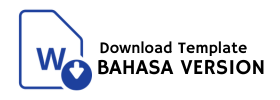Strategic Use of AI Image Generators for Product Development and Market Expansion In The Bakery Business
DOI:
https://doi.org/10.38035/jafm.v5i3.664Keywords:
AI Image Generator, Meta Ads, Custom Cake, Product Development, Bakery IndustryAbstract
The evolution of Society 5.0, characterized by advanced technological integration, presents new opportunities for businesses to enhance operations and customer engagement. This study proposes the development of a comprehensive e-commerce website for Olson’s Patisserie, integrated with AI Image Generator technology, to improve digital sales and expand market reach. The proposal is informed by strategic insights from Porter's Five Forces, Fishbone analysis, and the VRIO framework, highlighting the need for enhanced digital marketing, technological integration, and operational efficiency. The website will serve as a central hub for digital marketing, leveraging Meta Ads to boost brand awareness and reach a broader audience. AI features will enable personalized cake design, enhancing customer satisfaction and loyalty through an interactive shopping experience. The platform will also streamline operations with a comprehensive dashboard for order management and real-time analytics, supporting agile decision-making and strategic planning. By addressing identified weaknesses and capitalizing on opportunities, the integration of AI technology into Olson’s Patisserie’s product development process promises to strengthen its competitive position, improve customer engagement, and drive business growth in the dynamic bakery industry.
References
Barney, J. (1991). Firm resources and sustained competitive advantage. Journal of Management, 17(1), 99-120. doi:10.1177/014920639101700108
Beizer, B. (1995). Black-Box Testing: Techniques for Functional Testing of Software and Systems. John Wiley & Sons.
Brown, E., Green, S., & Wilson, A. (2021). Predictive design and quality assurance with AI. IEEE Transactions on Industrial Informatics, 17(4), 256-265. doi:10.1109/TII.2021.3054126
Brown, T. (2009). Change by Design: How Design Thinking Creates New Alternatives for Business and Society. Harper Business.
Camp, R. C. (1989). Benchmarking: The Search for Industry Best Practices that Lead to Superior Performance. ASQC Quality Press.
Chaffey, D., & Ellis-Chadwick, F. (2019). Digital Marketing: Strategy, Implementation and Practice. Pearson.
Chen, J., Wang, Y., & Li, X. (2020). Consumer data analysis using AI in product design. Journal of Product Innovation Management, 37(2), 178-189. doi:10.1111/jpim.12515
Creswell, J. W., & Poth, C. N. (2018). Qualitative Inquiry and Research Design: Choosing Among Five Approaches (4th ed.). SAGE Publications.
Davenport, T. H., & Ronanki, R. (2018). Artificial intelligence for the real world. Harvard Business Review, 96(1), 108-116.
Denzin, N. K., & Lincoln, Y. S. (Eds.). (2018). The SAGE Handbook of Qualitative Research (5th ed.). SAGE Publications.
Euromonitor International. (2020). Bakery products in Indonesia. Retrieved from Euromonitor International
Gartner. (2021). Gartner framework for enterprise architecture. Retrieved from Gartner
Goodstats. (2022). The impact of AI Image Generators on product development. Retrieved from Goodstats
Google Trends. (2023). Interest over time for "Custom Cake" in Indonesia. Retrieved from Google Trends
Gurel, E., & Tat, M. (2017). SWOT analysis: A theoretical review. Journal of International Social Research, 10(51).
IDEO. (2015). The Field Guide to Human-Centered Design. IDEO.
Indonesian Ministry of Industry. (2021). Performance of the food and beverage industry. Retrieved from Ministry of Industry
Ishikawa, K. (1986). Guide to Quality Control. Asian Productivity Organization.
Johnson, M. W., Christensen, C. M., & Kagermann, H. (2008). Reinventing your business model. Harvard Business Review, 86(12), 50-59.
Jones, R., Brown, T., & Davis, L. (2023). Real-time market adaptation using AI. Journal of Business Research, 89(3), 211-224. doi:10.1016/j.jbusres.2022.06.008
Kietzmann, J., Paschen, J., & Treen, E. (2018). Artificial intelligence in advertising: How marketers can leverage AI to navigate the consumer journey. Journal of Advertising Research, 58(3), 263-267. doi:10.2501/JAR-2018-035
Kotler, P., & Keller, K. L. (2016). Marketing Management (15th ed.). Pearson Education.
Krajewski, L. J., Ritzman, L. P., & Malhotra, M. K. (2016). Operations Management: Processes and Supply Chains (11th ed.). Pearson.
Laudon, K. C., & Laudon, J. P. (2020). Management Information Systems: Managing the Digital Firm (16th ed.). Pearson.
Li, Y., Zhang, H., & Zhao, J. (2021). Accelerating product development with AI-generated designs. International Journal of Technology Management, 63(1), 45-58. doi:10.1504/IJTM.2021.113835
McKinsey. (2022). The state of AI in 2022—and a half decade in review. Retrieved from McKinsey
Meta. (2022). Meta Ads: The basics. Retrieved from Meta for Business
Myers, G. J., Sandler, C., & Badgett, T. (2011). The Art of Software Testing (3rd ed.). John Wiley & Sons.
Osterwalder, A., & Pigneur, Y. (2010). Business Model Generation: A Handbook for Visionaries, Game Changers, and Challengers. Wiley.
Porter, M. E. (2008). The five competitive forces that shape strategy. Harvard Business Review, 86(1), 78-93.
Royce, W. W. (1970). Managing the development of large software systems. Proceedings of IEEE WESCON, 1-9.
Schwab, K. (2017). The Fourth Industrial Revolution. Currency.
Sessions, R. (2007). A comparison of the top four enterprise-architecture methodologies. Microsoft Architecture Journal, (9).
Smith, A., & Anderson, M. (2022). Efficiency gains from AI in product development. Technology in Society, 68, 101-115. doi:10.1016/j.techsoc.2021.101285
Sommerville, I. (2016). Software Engineering (10th ed.). Pearson.
Statista. (2021). Meta’s advertising revenue worldwide. Retrieved from Statista
Statista. (2023). Artificial intelligence - worldwide. Retrieved from Statista
Turban, E., Pollard, C., Wood, G., & King, D. (2018). Information Technology for Management: On-Demand Strategies for Performance, Growth, and Sustainability. Wiley.
Ulrich, K. T., & Eppinger, S. D. (2012). Product Design and Development (5th ed.). McGraw-Hill Education.
USDA Foreign Agricultural Service. (2022). Indonesia grain and feed annual report. Retrieved from USDA
Zhang, W., & Liu, Q. (2022). Personalized product recommendations with AI. Computers in Human Behavior, 74, 653-664. doi:10.1016/j.chb.2021.12.001
Downloads
Published
How to Cite
Issue
Section
License
Copyright (c) 2024 Michelle Teodorine, Genoveva Brigitta Indrawan, Michael Manuel, Agung Stefanus Kembau

This work is licensed under a Creative Commons Attribution 4.0 International License.
Authors who publish their manuscripts in this journal agree to the following conditions:
- The copyright on each article belongs to the author(s).
- The author acknowledges that the Journal of Accounting and Finance Management (JAFM) has the right to be the first to publish with a Creative Commons Attribution 4.0 International license (Attribution 4.0 International (CC BY 4.0).
- Authors can submit articles separately, arrange for the non-exclusive distribution of manuscripts that have been published in this journal into other versions (e.g., sent to the author's institutional repository, publication into books, etc.), by acknowledging that the manuscript has been published for the first time in the Journal of Accounting and Finance Management (JAFM).
























